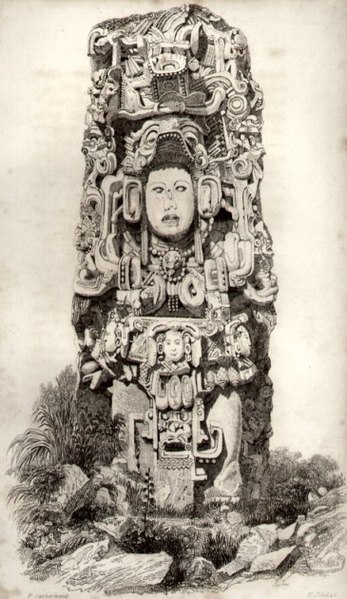The Xi'an Stele or the Jingjiao Stele, sometimes translated as the "Nestorian Stele," is a Tang Chinese stele erected in 781 that documents 150 years of early Christianity in China. It is a limestone block 279 centimetres high with text in both Chinese and Syriac describing the existence of Christian communities in several cities in northern China. It reveals that the initial Church of the East had met recognition by the Tang Emperor Taizong, due to efforts of the Christian missionary Alopen in 635. According to the stele, Alopen and his fellow Syriac missionaries came to China from Daqin in the ninth year of Emperor Taizong (635), bringing sacred books and images. The Church of the East monk Adam composed the text on the stele. Buried in 845, probably during religious suppression, the stele was not rediscovered until 1625. It is now in the Stele Forest in Xi'an.
The stele entitled 大秦景教流行中國碑 was erected in China in 781.
Title of the stele: "Stele to the Propagation in China of the Luminous Religion (Church of the East) of the Roman Empire (Daqin)"
A Nestorian tombstone from Quanzhou
Nestorian pillar of Luoyang, established in 815 and discovered in 2006.
A stele, or occasionally stela when derived from Latin, is a stone or wooden slab, generally taller than it is wide, erected in the ancient world as a monument. The surface of the stele often has text, ornamentation, or both. These may be inscribed, carved in relief, or painted.
Stele N from Copán, Honduras, depicting King K'ac Yipyaj Chan K'awiil ("Smoke Shell"), as drawn by Frederick Catherwood in 1839
Stele to the French 8th Infantry Regiment. One of more than half a dozen steles located on the Waterloo battlefield.
The funerary stele of Thrasea and Euandria, c. 365 BC
Stela of Iddi-Sin, King of Simurrum. It dates back to the Old Babylonian Period. From Qarachatan Village, Sulaymaniyah Governorate, Iraqi Kurdistan. The Sulaymaniyah Museum, Iraq.








